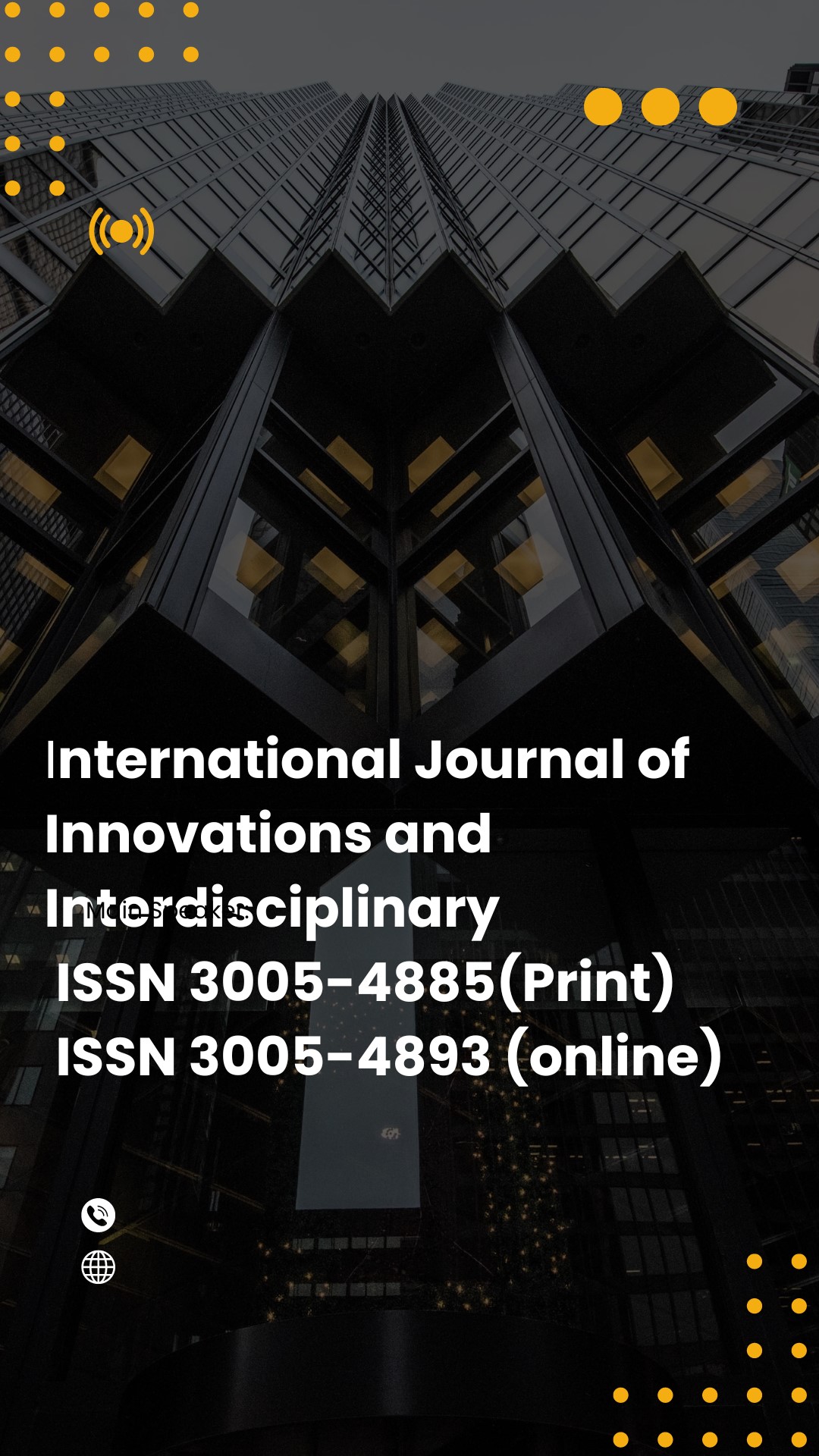Influence of Layout Design Strategy on the Performance of Retail Chains in Nairobi Central Business District.
DOI:
https://doi.org/10.61108/ijiir.v2i1.77Keywords:
Layout Design Strategy, Performance of Retail ChainsAbstract
Operations strategy offers the organization a limitless framework for creating priorities for how to make the greatest use of the assets at hand through effective operational activities in an effort to gain a competitive edge and accomplish managerial goals. The main objective of this study was to establish the influence of layout design strategy on the performance of retail chains in the Nairobi Central Business District. The study was anchored on the resource dependency theory. The study adopted a descriptive research design and the target population was 34 retail chains within the Nairobi CBD area. The sample population involved 80 managers who were in charge of the retail chains in Nairobi CBD. Self-administered structured questionnaires were used to collect primary data. Data was analyzed using descriptive and inferential statistics. The study found that layout design strategy has a positive significant influence on the performance of retail chains in the Nairobi Central Business District. This is because an increase in a unit of layout design strategy leads to an improvement of the performance of the retail chains. The study recommended that retail chains should pay meticulous attention to store layout and product positioning. The study also recommended that regular assessments should be conducted to ensure that products are strategically placed for easy customer identification. Implement a data-driven approach to store layout optimization, considering customer traffic patterns and preferences. This can enhance the overall shopping experience and drive higher sales.
Downloads
References
. Akpan, S. J., & Uford, I. C. (2023). Retail Outlet Location and Business Performance in Uyo Metropolis. International Journal of Advances in Management and Economics, 12(4), 9-18.
. Ali, A., & Haseeb, M. (2019). Radio frequency identification (RFID) technology as a strategic tool towards higher performance of supply chain operations in textile and apparel industry of Malaysia. Uncertain Supply Chain Management, 7(2), 215-226.
. Beske-Janssen, P., Schaltegger, S., & Liedke, S. (2019). Performance measurement in sustainable supply chain management: Linking research and practice. Handbook on the Sustainable Supply Chain. Cheltenham: Edward Elgar Publishing, 331-56.
. Charles, M., Ndolo, J., & Odari, S. (2023). Inventory management practices and performance of electoral systems in Kenya. International Journal of Social Science and Humanities Research (IJSSHR) ISSN 2959-7056 (o); 2959-7048 (p), 1(1), 811–826. https://doi.org/10.61108/ijsshr.v1i1.64
. Chesula, O. W., & Nkobe, K. D. (2018). Analyzing the Course of Turmoil in Kenya’S Retail Sector.
. Gaalman, G., Disney, S. M., & Wang, X. (2019). When the bullwhip effect is an increasing function of the lead time. IFAC-PapersOnLine, 52(13), 2297-2302.
. Glover, J. L., Champion, D., Daniels, K. J., & Dainty, A. J. (2014). An Institutional Theory perspective on sustainable practices across the dairy supply chain. International Journal of Production Economics, 152, 102-111.
. Harry, M., & Schroeder, R. (2006). Six sigma: the breakthrough management strategy revolutionizing the world's top corporations. Currency.
. Kothari, C. R. (2004). Research methodology: Methods and techniques. New Age International.
. Li, C. (2011). A facility layout design methodology for retail environments (Doctoral dissertation, University of Pittsburgh).
. Mafini, C., & Loury-Okoumba, W. V. (2018). Extending green supply chain management activities to manufacturing small and medium enterprises in a developing economy. South African Journal of Economic and Management Sciences, 21(1), 1-12.
. Robinson, P. K., & Hsieh, L. (2016). Reshoring: a strategic renewal of luxury clothing supply chains. Operations Management Research, 9, 89-101.
. Schmidt, M., Le Roux, N., & Bach, F. (2017). Minimizing finite sums with the stochastic average gradient. Mathematical Programming, 162, 83-112.
. Simon, J., & Omar, A. (2020). Cybersecurity investments in the supply chain: Coordination and a strategic attacker. European Journal of Operational Research, 282(1), 161-171.
. Tatoglu, E., Bayraktar, E., Golgeci, I., Koh, S. L., Demirbag, M., & Zaim, S. (2016). How do supply chain management and information systems practices influence operational performance? Evidence from emerging country SMEs. International Journal of Logistics Research and Applications, 19(3), 181-199.
. Teller, C., Kotzab, H., Grant, D. B., & Holweg, C. (2016). The importance of key supplier relationship management in supply chains. International Journal of Retail & Distribution Management, 44(2), 109-123.
. Thakkar, J., Kanda, A., & Deshmukh, S. G. (2009). Supply chain performance measurement framework for small and medium scale enterprises. Benchmarking: An International Journal, 16(5), 702-723.
. Wijetunge, W. A. D. S. (2017). The role of supply chain management practices in achieving organizational performance through competitive advantage in Sri Lankan SMEs. International Journal of Management and Applied Science, 3(1), 81-88.
. Zikmund, W. G., D'alessandro, S., Winzar, H., Lowe, B., & Babin, B. (2014). Marketing research. Sydney: Cengage Learning.
Downloads
Published
How to Cite
Issue
Section
License
Copyright (c) 2024 International Journal of Innovations and Interdisciplinary Research (IJIIR) ISSN 3005-4885 (p);3005-4893(o)

This work is licensed under a Creative Commons Attribution-NonCommercial 4.0 International License.
The International Journal of Innovations and Interdisciplinary Research (IJIIR) adopts the Creative Commons Attribution-NonCommercial 4.0 International (CC BY-NC 4.0) license terms for all published articles. This license governs the rights and permissions associated with the use, distribution, and reproduction of the published content, ensuring a balance between authors' intellectual property rights and the wider dissemination of knowledge.
Under the CC BY-NC 4.0 license, the following terms apply:
-
Attribution (BY): Users are required to give appropriate credit to the original authors and provide a link to the original work. Proper attribution acknowledges the intellectual contribution of the authors and allows others to trace the research back to its source.
-
NonCommercial (NC): The license prohibits commercial use of the published material. Users may not exploit the work for commercial purposes without obtaining explicit permission from the copyright holder. Non-commercial use includes activities such as selling, licensing, or monetizing the content.
-
Adaptation: The CC BY-NC 4.0 license allows users to remix, transform, or build upon the original work, but only for non-commercial purposes. Adaptations or derivative works based on the published material must also be shared under the same license terms, giving proper attribution to the original authors.
The CC BY-NC 4.0 license ensures that the published research in the International Journal of Innovations and Interdisciplinary Research remains accessible to a wide audience while respecting the intellectual property rights of the authors. It encourages the sharing, dissemination, and collaborative use of knowledge within the academic community, fostering innovation and furthering the advancement of social sciences and humanities research.
Authors publishing their work in IJIIR grant the journal the right to publish and distribute their articles under the CC BY-NC 4.0 license. This license facilitates the unrestricted availability of the research, allowing readers, educators, and researchers to access, cite, and build upon the published content, as long as they comply with the license terms.
By adopting the CC BY-NC 4.0 license, Ijiir promotes open access principles and encourages the responsible use of scholarly work. It empowers researchers to disseminate their findings widely and fosters collaboration, ensuring that knowledge generated in the field of social sciences and humanities can have a broader societal impact.






